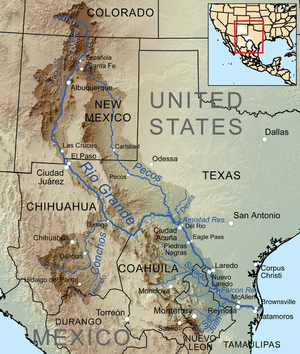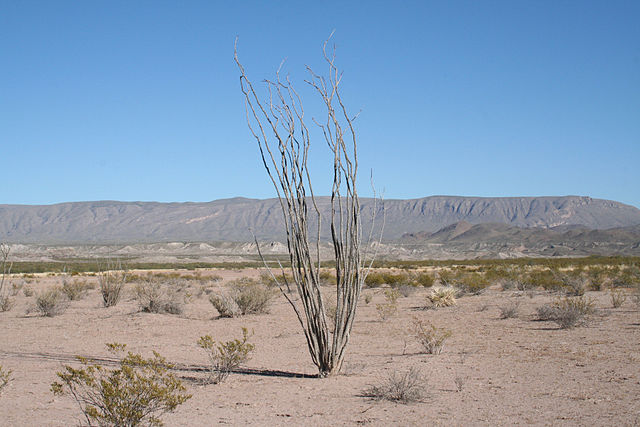Habitat
 The Dryland Liptooth,
Linisa tamaulipasensis, are native to
the United States and are found most abundantly in
the central and western Edwards Plateau of Texas (Pratt,
1981), more specifically within the Chihuahuan
desert. They live near the mouth along the
drift of the Rio Grande where it is rather arid
within the counties of
Kimble, Mitchell, and Brewster (Pratt,
1981).
The Dryland Liptooth,
Linisa tamaulipasensis, are native to
the United States and are found most abundantly in
the central and western Edwards Plateau of Texas (Pratt,
1981), more specifically within the Chihuahuan
desert. They live near the mouth along the
drift of the Rio Grande where it is rather arid
within the counties of
Kimble, Mitchell, and Brewster (Pratt,
1981).
The Chihuahuan Desert is the largest desert in North America and resides mostly in the states of Chihuchua and Coalhuila of Mexico, however, a small portion of its tip reaches up to Texas, southern New Mexico and western Arizona (New Mexico State University, 2011). It resides between the Sierra Madre Occidental, which is located to its west, and the Sierra Madre Oriental located to its east thus making it also known as a rain shadow desert (New Mexico State University, 2011). The Chihuahuan Desert has a vast range of elevation ranging from
 1970 feet to 5500 feet allowing it to
have very diverse habitats, including river valleys
and wetlands, characteristics not common to many
deserts (New Mexico State
University, 2011). Also, individualistic
to the Chihuahuan Desert is the presence of the
lechugilla, an Agave plant, which is one of
the many indicator plants of the Chihuahuan desert (New
Mexico State University, 2011).
1970 feet to 5500 feet allowing it to
have very diverse habitats, including river valleys
and wetlands, characteristics not common to many
deserts (New Mexico State
University, 2011). Also, individualistic
to the Chihuahuan Desert is the presence of the
lechugilla, an Agave plant, which is one of
the many indicator plants of the Chihuahuan desert (New
Mexico State University, 2011).
The Linisa tamaulipasensis are genuinely found in shrub savannah on calcareous slopes, slopes rich in calcium carbonate, and uplands (Pratt, 1981). The snails living on the western end of their range of habitat often burrow in loose soil amongst limestone talus and restricted to those slopes and the snails living on the more eastern end are restricted to well drained ridge tops (Pratt, 1981).
